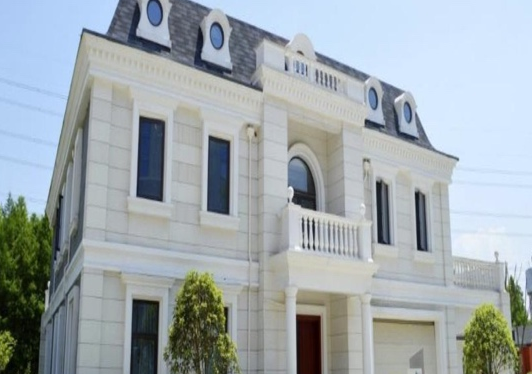Focus on creating 3D printing water conservancy facilities
In 2020, the torrential rain in the south caused the water level of rivers and lakes to soar, flooding in many places, and the public opinion was menacing. On July 12th, the National Defense General upgraded the flood control level III emergency response to level II.
The severe flood in 2020 is reminiscent of the catastrophic flood in 1998. Twenty-two years have passed, and China has once again been tested by the great flood. What are the differences in China's flood control capacity this time?
The 1988 flood
VS
2020 public opinion
Comparison of grievances
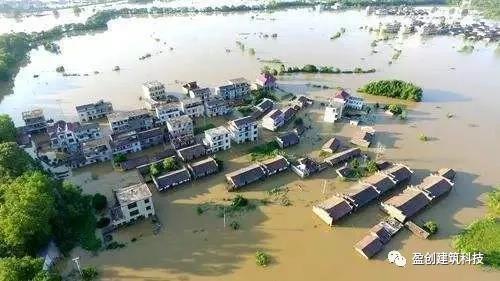
The great flood in 1998 was a great flood in the whole Yangtze River basin. However, this year's floods are still regional floods. At present, the rainfall belt is moving northward, and the flood in the Yangtze River basin will be suspended. However, it is necessary to pay continuous attention to the floods in the middle and upper reaches of the Yangtze River. If the floods in the middle and upper reaches overlap with the flood in the middle and lower reaches, the whole basin flood similar to that in 1998 will be formed.
Comparison of flood discharge capacity
Comparison of flood discharge capacit
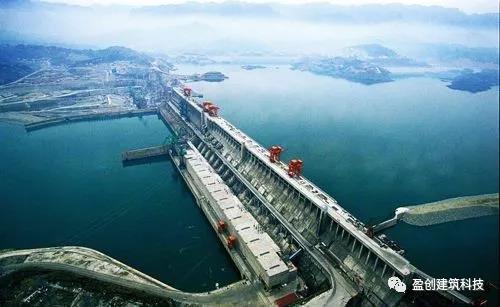
In 1998, the Three Gorges Water Conservancy Project had not been completed. The flood control capacity of the main levees and tributaries of the Yangtze River as a whole is relatively low.
At 20: 00 on 19, 2020, the inflow of the Three Gorges Reservoir was 46,000 cubic meters per second, which was 15,000 cubic meters per second lower than the peak value of the current flood of 61,000 cubic meters per second. "No.2 flood of the Yangtze River in 2020" passed the Three Gorges Dam smoothly.
Li Na, director of flood management and impact assessment research department of Disaster Reduction Center, Chinese Academy of Water Sciences, pointed out in an interview with Global Daily reporter: If the 98-year flood happens again now, the flood control system of the main stream of the Yangtze River will have no problem at all, and effective defense can be carried out. However, the Yangtze River runs very long from east to west, and the flood control capacity of some tributaries and mountain torrents in the upper reaches is not high. It is quite normal to avoid all losses caused by floods in some areas for a while.
Keywords Yangtze River basin, scientific governanceKeywords Yangtze River basin, scientific governance
Keywords Yangtze River basin, scientific governance
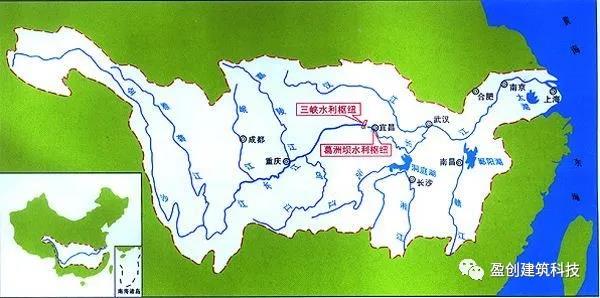
After the great flood in 1998, several major projects have been done to improve the flood control capacity of the Yangtze River: First, the project of "leveling the embankment to flood, returning farmland to lake, and immigrating to build towns" has been implemented, and the flood storage capacity of the Yangtze River has increased; Second, the reinforcement and heightening of dikes in the main stream of the Yangtze River and the dredging of rivers have greatly enhanced the flood discharge capacity; Third, many reservoirs with flood control function have been built on the main tributaries of the Yangtze River, and the ability of flood regulation and storage has been significantly improved. The most important thing is that the Three Gorges Water Conservancy Project has been built, and its flood control capacity has reached 22 billion cubic meters.
……
Yingchuang 3D Printing New Ideas of Water Conservancy Engineering gchuan
g 3D Printing New Ideas of Water Conservancy Engineering
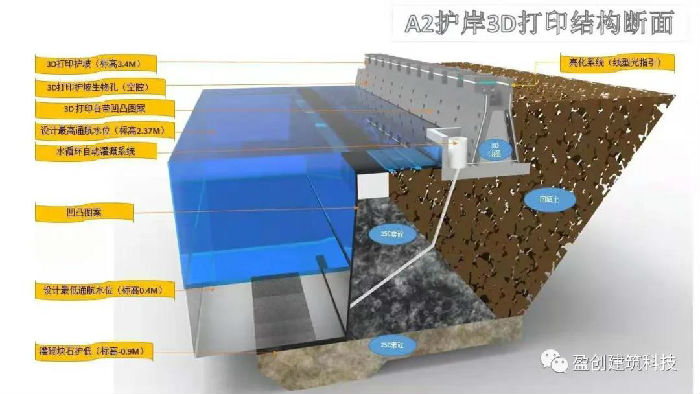
As early as 2018, Yingchuang Construction Technology (Shanghai) Co., Ltd. focused on river courses, coastlines and urban underground pipe gallery facilities, and used the leading global 3D printing construction technology to print out various water conservancy facilities.
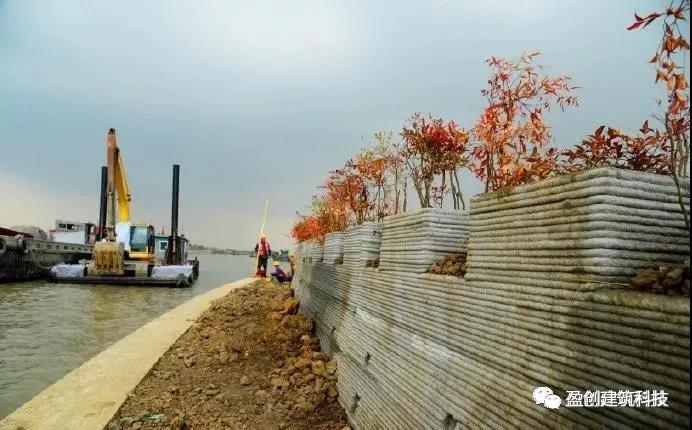
In 2019, Yingchuang tailored the 3D printed secondary revetment for Sushen Outer Port Line (Jiangsu Section) in Suzhou City, Jiangsu Province, and optimized the design scheme for many times. The completed 3D printed revetment not only met the safety and stability requirements, but also met the landscape needs. First, the structure is optimized. The main body of the revetment adopts buttressed cavity structure, which reduces the concrete consumption by more than 2/3 compared with the concrete retaining wall of the same size, and greatly saves the input of raw materials. Second, the construction is integrated. Each section of the revetment structure is 4 meters long and weighs about 5 tons. This sectional method is convenient for hoisting on site and ensures the integrity of the structure. After accurately dividing the line types of design sections, it is printed and installed section by section, thus realizing the accurate control of the line types. Third, the efficiency is improved. The top of the revetment is provided with staggered green planting empty boxes, and the bottom of the empty boxes is connected with the backfill soil behind the wall, so as to realize the exchange of water bodies and provide water basis for plant growth.
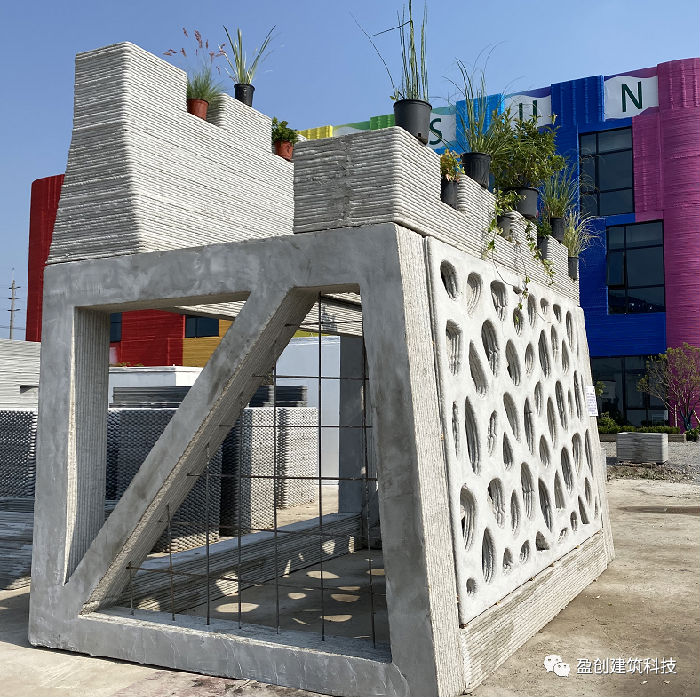
In 2020, Yingchuang introduced the ecological riparian management plan, which reinforced the riverbank and considered the riparian ecology to provide a reliable habitat for riparian aquatic organisms.
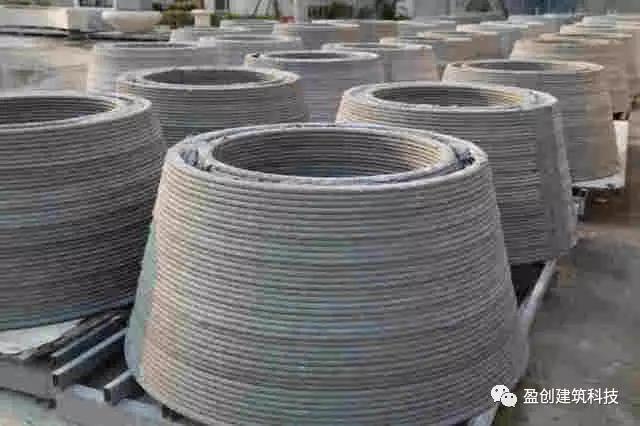
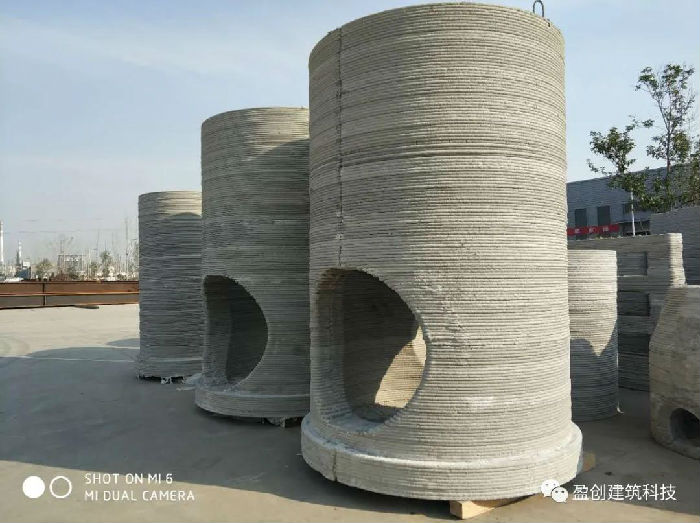
At the same time, Yingchuang takes "Sponge City" as its starting point. In 2018, Yingchuang launched three generations of sewage well facilities, which can be printed in an integrated way according to needs, accurately reserve holes, and only need to be hoisted and connected. A new drainage pipeline can relieve the pressure of waterlogging in cities, rivers and towns.
Advantages of Yingchuang 3D Printing Water Conservancy Facilities
Advantages of Yingchuang 3D Printing Water Conservancy Facilities
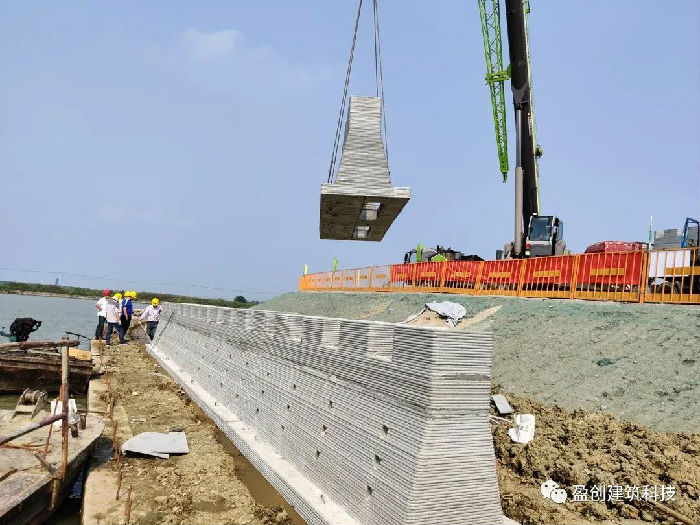
3D printing technology has many advantages in river regulation and sponge city building: First, it is more economical, which can realize the automatic production of revetment structures and urban water conservancy facilities, and can be installed on site, thus greatly reducing labor input. Second, it is more ecological. 3D printing technology makes the project more integrated into the environment and close to nature. Third, it is more environmentally friendly. 3D printing technology enables the recycling of construction waste materials, and truly realizes the environmental protection concept of additive manufacturing.





